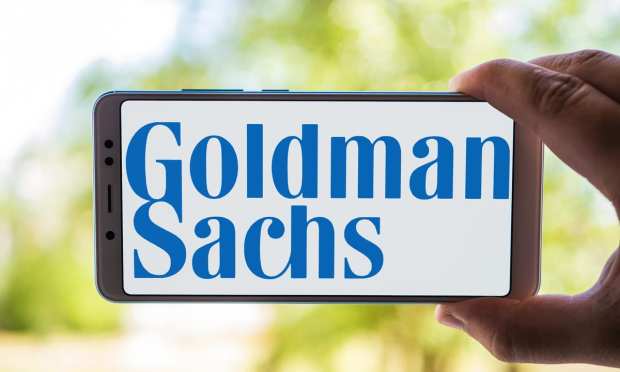Goldman CEO: Bullish On Marcus, Reserved On Crypto

Turns out that triple-digit stock market growth isn’t reserved for GameStop. Working in an unprecedented environment of SPAC hype, crypto-mania and retail trading explosions, Goldman Sachs posted record first-quarter profits and earnings Wednesday (April 14), keeping its old-school investment practices front and center, but leaving plenty of room for its digital properties.
By the numbers, Goldman took in $17.7 billion in revenue for Q1, outpacing its expected $12.6 billion. Its per-share earnings came in at $18.60, which represented growth of 498 percent over 2020. Investment banking took in $3.8 billion up 73 percent from Q1 2020. Revenue from initial public offerings (IPOs) and special purpose acquisition companies (SPACs) quadrupled to $1.6 billion.
CEO David Solomon took a conservative view of the SPAC fever that has gripped the Street.
“There’s no question that given the number of SPACs that have been raised, the incentives that are set certainly lead to all those sponsors to look for deals actively,” he said on the earnings call. “Given our position in the M&A market, that should be a tailwind. That said, just to quantify it, when you look at our M&A activity, that M&A activity for us with SPACs last quarter, I think it was a single-digit percentage of the M&A activity that we participated in. So, while it’s a tailwind, I wouldn’t say that that’s dominating the M&A activity and the positive constructive comments we made around M&A.”
In the context of other bank earnings announced on Wednesday (Wells Fargo, JPM), the Goldman Sachs numbers weren’t completely shocking, especially considering the scale and speed of market dynamics during Q1. The more intriguing results, as well as comments from Goldman executives on the earnings call, came from the digital side of the house: the bank’s Marcus division and its conservative crypto approach. Revenue in Goldman’s consumer and wealth-management division, which includes its Marcus consumer bank, rose 16 percent to $1.7 billion.
In regard to Marcus, Solomon told analysts on the earnings call that he was satisfied with the progress the company had made in realizing its vision. Q1 was notable for Marcus as it launched Marcus Invest in the U.S., its digital investment product which aims, at least in part, to capture the Robinhood user audience. Marcus Invest provides consumers trading access with as little as a $1,000 investment. Solomon said Goldman was now focused on scaling the platform and working toward launching digital checking in the U.S., as well as a Marcus Invest expansion in the U.K. But don’t expect Marcus and crypto to be in the same package anytime soon.
“We have a plan at the moment to build a digital bank that’s offering an array of integrated basic services in a completely digital, frictionless platform. And we’re extremely focused on that,” Solomon said. “At the moment, we are not focused on offering a crypto wallet ahead of providing what I’ll call more basic set of financial services on a digital platform. We’ll obviously monitor how the world evolves with this. We’ll see how things progress and we’ll continue to watch it. But I’m not going to comment further on longer term plans for individuals. We’ve been focused on other things. And with respect to crypto, payment systems, the digitization of money, we’ve been much more focused on the institutional side.”
On the general topic of cryptocurrency, Solomon said he expects more disruption to roil the market, and seemed to be more sure of central bank-based formats. The trajectory surrounding bitcoin, he said, was less clear. He noted that current regulatory guidelines forbid Goldman from owning or trading in bitcoin.
